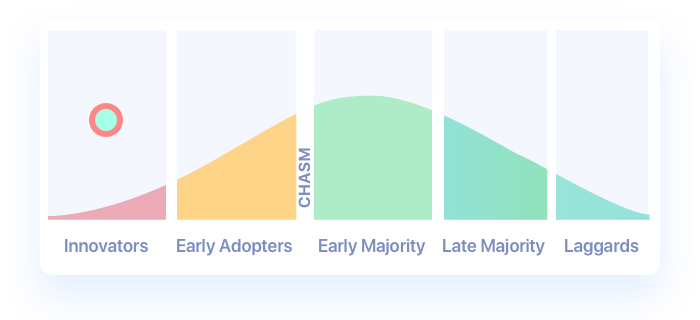Block Chain
A blockchain is a continuously growing list of records, called blocks, which are linked and secured using cryptography. Each block typically contains a cryptographic hash of the previous block, a timestamp and transaction data. By design, a blockchain is inherently resistant to modification of the data. It is "an open, distributed ledger that can record transactions between two parties efficiently and in a verifiable and permanent way". For use as a distributed ledger, a blockchain is typically managed by a peer-to-peer network collectively adhering to a protocol for validating new blocks. Once recorded, the data in any given block cannot be altered retroactively without the alteration of all subsequent blocks, which requires collusion of the network majority.
Blockchains are secure by design and are an example of a distributed computing system with high Byzantine fault tolerance. Decentralized consensus has therefore been achieved with a blockchain. This makes blockchains potentially suitable for the recording of events, medical records, and other records management activities, such as identity management, transaction processing, documenting provenance, food traceability or voting.[1]
Blockchain, in Wikipedia. Retrieved February 12, 2018 from https://en.wikipedia.org/wiki/Blockchain
Position on the Adoption Curve

Presentations about Block Chain

FlexiTime Token: Building dApps with Ethereum

ID Crisis! Take Back Control With Self-Sovereign

Architecting the Blockchain for Failure

Blockchain AMA w/ Conor Svensson & Eoin Woods

Blockchain AMA w/ Conor Svensson & Eoin Woods
Interviews
Architecting the Blockchain for Failure
So what's the big goal for the talk?
It's to get people interested in this technology. It's not a blank slate, but blockchain is a young technology. There's constant innovation in the space - with numerous groundbreaking technical papers being published and applications being developed. It’s so new that the he good books haven't been published. We’re in a fascinating, disruptive period in blockchain technology, which means there’s plenty of opportunity for technologists.
What is the state of the frameworks? Are they at a high enough level of abstraction where developers don't have to understand the computer science underneath?
It’s getting there. This was why my library, web3j, was written. When I first started digging around with the technology, I thought, OK, as a Java developer how do I work with this? And there was a big disconnect, there was no straightforward means for Java developer to integrate with the main blockchain technology - Ethereum. This surprised me, as Java is so widely used in financial firms, and given all the hype around blockchain applications in finance, it seemed like a no-brainer to try and connect the two together. That resulted in the creation of my library web3j, the Java library for integrating with Ethereum.

